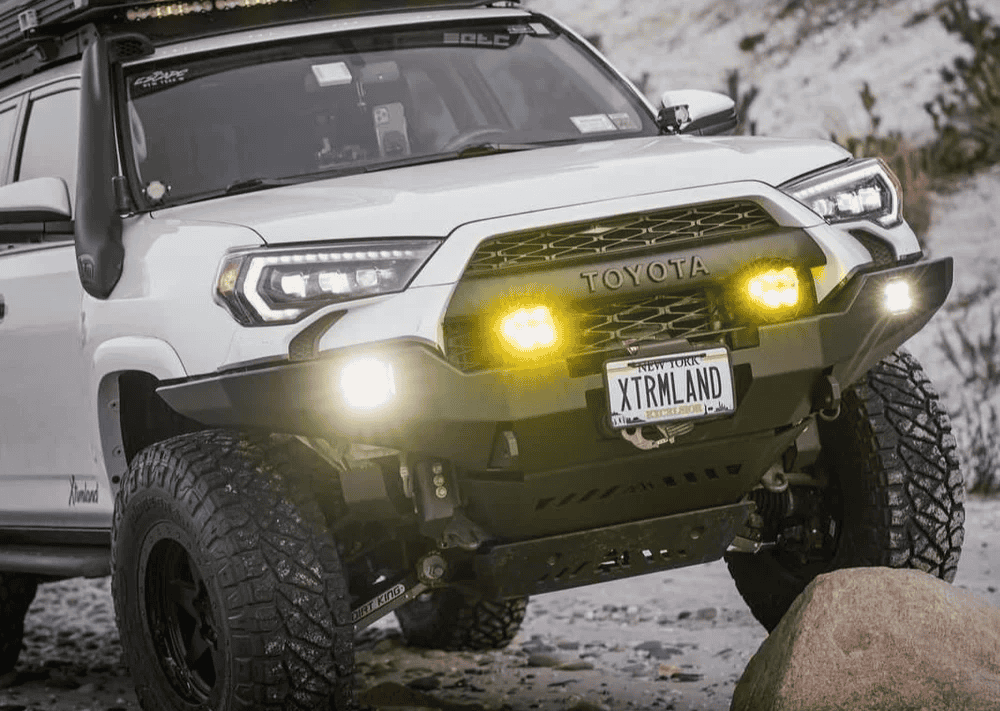Overland Vehicles

Rock sliders act like armor for the most vulnerable part of a trail rig, the seam and lower door sills. A proper set prevents sheet metal damage when you drop into a rut, lean into a boulder, or high center on a ridge. Beyond impact protection, sliders provide a controlled surface to pivot the vehicle around obstacles, reducing stress on suspension and steering components. They also serve as sturdy lift points for a farm jack or bottle jack when a tire change or trail repair is required. Unlike decorative steps, true sliders are engineered to carry load and to disperse energy into the structure that can handle it.
Frame mounted sliders use welded or bolted outriggers that tie directly into the chassis rails. This design routes trail forces into the strongest part of the vehicle and is the standard for real overland protection. Body or pinch seam mounted units can be lighter and easier to install but risk deforming thin sheet metal under a hard strike. If your rig regularly sees ledges, shelves, and rock gardens, a frame mount is the reliable choice. Where bolt on brackets are used, look for multiple contact points, gussets, and hardware that matches factory grade.
Steel remains the default for its impact resistance and predictable deformation. Drawn over mandrel round tube or rectangular tubing with a wall in the 0.120 to 0.188 inch range is common for midsize and full size platforms. Aluminum sliders can reduce weight and resist corrosion but need thoughtful design, thicker sections, and robust brackets to avoid flex. For mixed terrain travel, many builders favor a main rail in round tube for sliding and a box section for outriggers to minimize twist.
A slight upswept angle improves clearance and keeps the rail close to the rocker while still functioning as a usable step. A rear kick out widens the tail end of the slider to nudge the body away from obstacles as the back tire climbs, which can prevent quarter panel scars. If you camp on uneven ground, a flat top plate with dimple dies offers secure footing without trapping mud.
Strong sliders are simple, but details decide whether they stay quiet on pavement and stout in the rocks. Double shear attachments, internal sleeves, and triangular gussets reduce flex under side loads. Drilled drain holes stop water pooling and rust expansion inside tubes. A bolt on outer tube or removable step plate allows replacement after a hard season without pulling the main rail. Coatings matter too. Powder coat resists chips but needs touch up after impacts, while a quality paint lets you sand and respray quickly after a trail day. Some owners add a base layer of zinc rich primer for extra salt resistance.
Any armor that touches the frame can transmit noise if it shifts. Use proper torque, thread locker where specified, and retorque after the first few drives. Add isolators only where a manufacturer intends them, since soft mounts can reduce strength. Inspect weld toes and bracket edges each service interval for chips, then clean and repaint to seal out moisture. In winter environments, rinse salt before storage.
Fitment is specific to the exact model year, wheelbase, and trim, so confirm bracket locations and hole sizes before starting. Lifted rigs with long travel suspension may need extra clearance near lower control arm mounts or body mounts. On some vehicles, fuel and brake lines run along the frame rails, so heat shielding and careful routing protect them during install. Leave a uniform gap between slider and rocker to account for body flex. After install, test jack the vehicle at multiple points to confirm stable contact and to learn safe jack positions before you need them on trail.
In technical terrain, approach the obstacle so the main rail touches before the rocker. Ease forward and let the slider carry weight as the tire climbs. When using a farm jack, place the foot under a reinforced flat section and keep the mast vertical. Avoid snatch recoveries from sliders unless the manufacturer rates the unit for that load and you have a straight line pull. After a strike, inspect the mounts, wipe dirt, and repaint scrapes to keep corrosion at bay.
Rock sliders work best as part of a cohesive plan. Pair them with skid plates, front and rear recovery points, and a suspension tuned for your travel weight. If you are mapping out a complete trail rig, explore how a slider’s kick out interacts with tire size and wheel offset to avoid rubbing at full stuff. When family travel is the goal, consider top plates that double as safe steps for kids entering the cabin.
For drivers building a full adventure platform, see how we approach systems as a whole on our overland rigs page. When your project calls for engineered protection tied cleanly into bumpers, racks, and skids, our custom overland upfit process aligns the metalwork with your route and payload. Curious about team, methods, and handoff experience, visit why choose OZK Customs.
You now know what separates true rock sliders from decorative steps, which materials and mounts hold up, and how to use them safely on the trail. If you want protection that matches your vehicle and the terrain you actually drive, let our crew design and install the right setup, integrated with your broader build. Tell us how you travel and we will turn that into silent strength under your doors.
Ready to protect your rig and gain confident jacking points for real trails. Share your platform and terrain in the form and the OZK team will spec, fabricate, and install rock sliders that fit your build plan and your adventures.
ADDRESS:
6159 E Huntsville Rd, Fayetteville, AR 72701
PHONE:
(479) 326-9200
EMAIL:
info@ozkvans.com